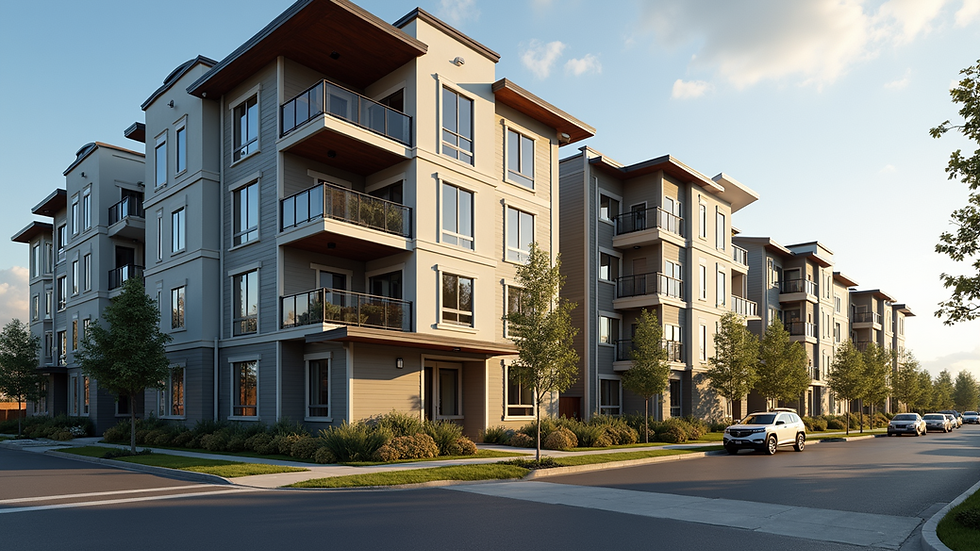Key Drivers Behind Tacoma's Population Growth
- Energize Tacoma

- Sep 22
- 4 min read
Tacoma, Washington, has been experiencing notable changes in its population size and composition over recent years. This growth is influenced by a variety of factors that shape the city’s economic, social, and cultural landscape. Understanding these drivers is essential for residents, businesses, and policymakers who want to navigate Tacoma’s evolving environment effectively.
Economic Opportunities Fueling Population Trends in Tacoma
One of the primary reasons behind Tacoma’s population increase is the expansion of economic opportunities. The city has seen growth in several key industries, including manufacturing, healthcare, education, and technology. These sectors provide a range of jobs that attract people from surrounding areas and beyond.
For example, the Port of Tacoma plays a significant role in the local economy by supporting trade and logistics jobs. Additionally, healthcare institutions like MultiCare Health System and Franciscan Health System offer stable employment options. The presence of the University of Washington Tacoma also contributes to a skilled workforce and innovation.
People moving to Tacoma often cite job availability and career growth as major reasons for relocation. This influx of workers and their families contributes to the overall population increase.
Actionable recommendations:
If you are a business owner, consider tapping into Tacoma’s growing labor market to find skilled employees.
Job seekers should explore opportunities in the city’s expanding sectors.
Local government can continue to support economic development initiatives to sustain growth.

Housing Development and Urban Expansion
Another significant driver of Tacoma’s population growth is the increase in housing development. As more people move to the city, the demand for affordable and diverse housing options rises. Tacoma has responded with new residential projects, including apartments, townhomes, and single-family homes.
The city’s urban expansion includes revitalizing older neighborhoods and developing new communities on the outskirts. This growth helps accommodate the rising population while offering various living environments to suit different preferences and budgets.
Affordable housing initiatives have also played a role in attracting residents who might otherwise be priced out of nearby cities like Seattle. The balance between urban living and access to nature makes Tacoma appealing to many.
Actionable recommendations:
Prospective residents should research different neighborhoods to find housing that fits their needs.
Developers can focus on mixed-use projects that combine residential and commercial spaces.
City planners should prioritize sustainable growth to maintain quality of life.

Is Tacoma Being Gentrified?
Gentrification is a topic of discussion in many growing cities, and Tacoma is no exception. As new residents move in and investments increase, some neighborhoods experience rising property values and changes in demographics.
Certain areas in Tacoma have seen an influx of higher-income residents, leading to improvements in infrastructure, businesses, and public spaces. However, this can also result in displacement concerns for long-time residents who may face higher rents and property taxes.
Community organizations and local government are actively working to balance revitalization with inclusivity. Efforts include affordable housing programs, tenant protections, and community engagement initiatives to ensure that growth benefits all residents.
Actionable recommendations:
Residents should stay informed about local housing policies and participate in community meetings.
Policymakers need to implement measures that protect vulnerable populations.
Newcomers can support local businesses and respect neighborhood cultures.

Transportation and Infrastructure Improvements
Improved transportation options and infrastructure upgrades have made Tacoma more accessible and livable, contributing to population growth. Investments in public transit, roadways, and bike lanes help residents commute efficiently and reduce traffic congestion.
The Sound Transit Link light rail extension to Tacoma is a major project that connects the city to Seattle and other parts of the region. This enhanced connectivity attracts commuters who want to live in Tacoma but work elsewhere.
Infrastructure improvements also include parks, schools, and community facilities that enhance quality of life. These developments make Tacoma a more attractive place for families and individuals looking for a balanced urban experience.
Actionable recommendations:
Residents should take advantage of new transit options to reduce commuting costs.
City officials can continue prioritizing infrastructure projects that support growth.
Businesses might consider locations near transit hubs to attract employees and customers.
Cultural and Recreational Attractions
Tacoma’s vibrant cultural scene and recreational opportunities are additional factors drawing people to the city. Museums, theaters, music venues, and festivals create a lively atmosphere that appeals to diverse populations.
Outdoor enthusiasts appreciate Tacoma’s proximity to parks, waterfronts, and hiking trails. The city’s commitment to green spaces and community events fosters a strong sense of belonging.
These amenities not only improve residents’ quality of life but also attract visitors who may decide to relocate permanently.
Actionable recommendations:
New residents should explore Tacoma’s cultural calendar to connect with the community.
Local businesses can collaborate with cultural organizations to enhance the city’s appeal.
City planners should continue investing in recreational infrastructure.
Looking Ahead: Managing Tacoma’s Growth
Tacoma’s population growth presents both opportunities and challenges. By understanding the key drivers behind this trend, stakeholders can make informed decisions that promote sustainable development.
Maintaining affordable housing, supporting economic diversity, and preserving community character are essential for long-term success. Collaboration between residents, businesses, and government will be crucial in shaping Tacoma’s future.
For those interested in tracking the latest data on tacoma population growth, resources are available to monitor changes and trends in real time.
Embracing Tacoma’s dynamic growth with thoughtful planning and community engagement will help ensure the city remains a vibrant and welcoming place for all.
.png)



Comments